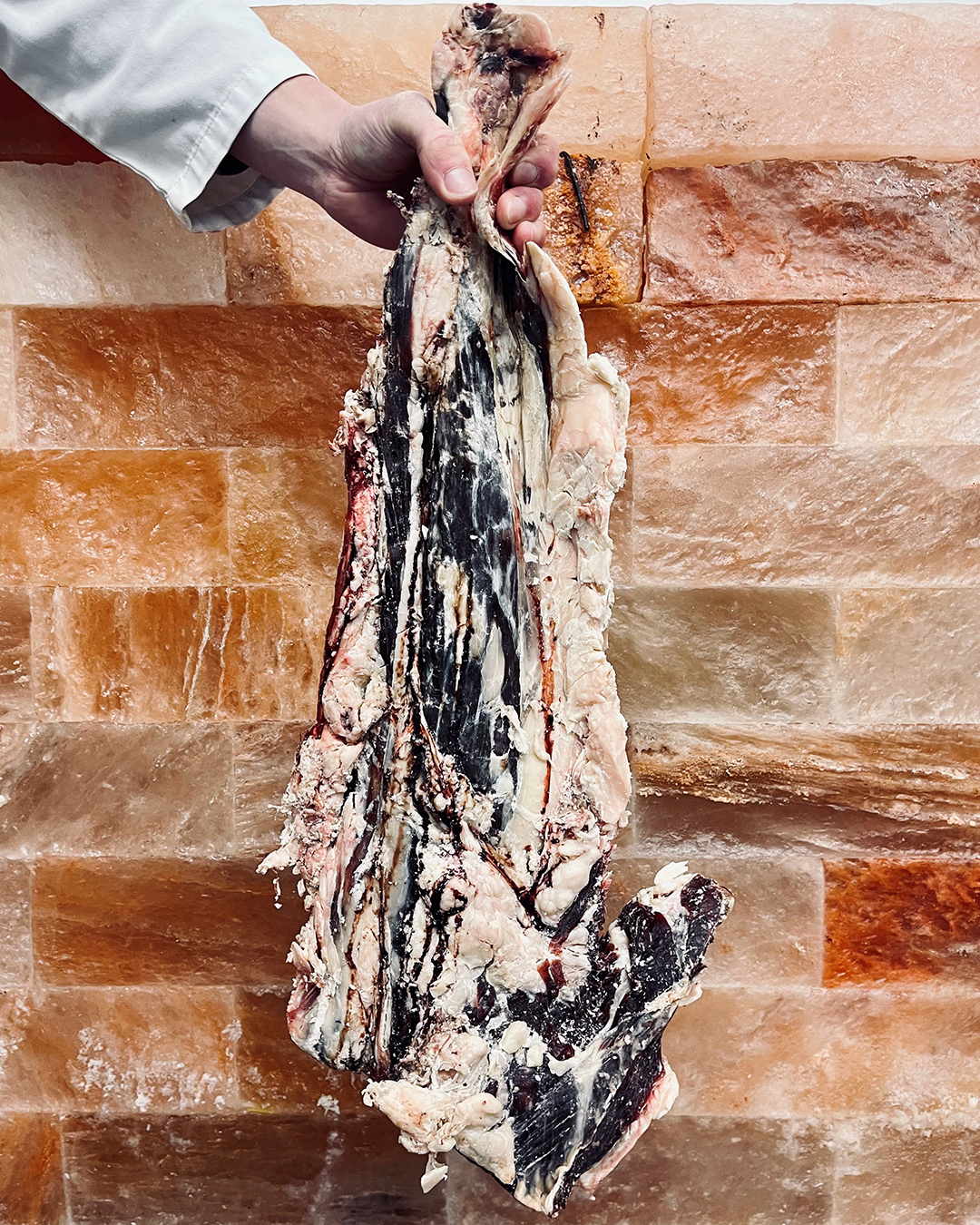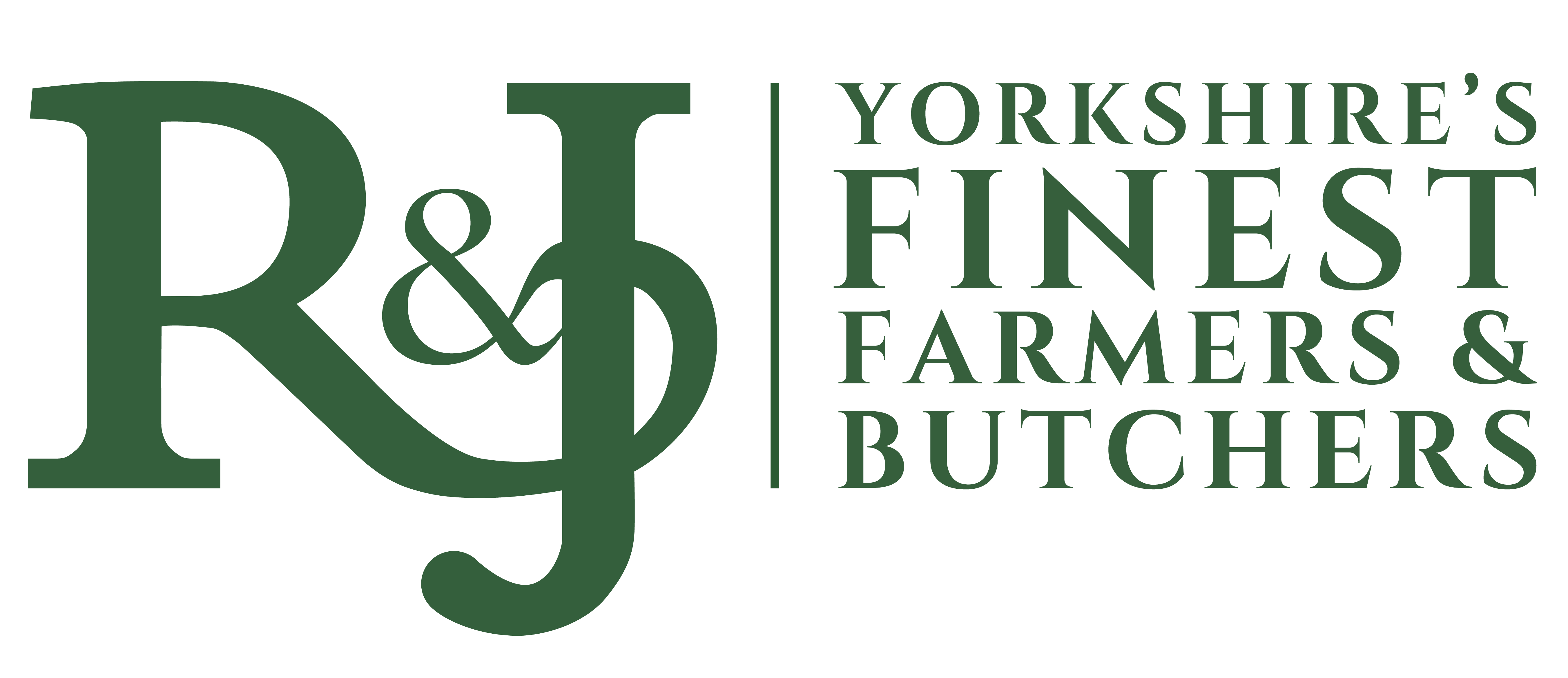June 28, 2023
The Art and Science of Ageing and Curing

Patience is a virtue, and never more so than when ageing or curing meat. Here at R & J Yorkshire’s Finest, where quality, consistency and no compromise are the promises we live by, we don’t take any short cuts. Our meat is aged and cured using expert techniques in various closely monitored environments to achieve a perfect finish.
Why do we Age meat?
Long before refrigeration, ageing meat was necessary to allow the enzymes to work their magic and tenderise the meat. Today, the main purpose of allowing meat to mature (or hang) is to develop both tenderness and flavour. Beef must be aged before consumption, but here at R & J we will dry age any of our products to meet our chefs specific requirements including pork, lamb, venison, hogget, cull yow (when in season), poulard, duck and squab pigeon, to name but a few.

What is Dry Ageing?
Dry Ageing is essentially a carefully controlled decaying process. Both good and bad bacteria exists on all meat. Air circulates around the carcass in a Chiller (cold room) with a specific temperature. As this slow drying of the meat intensifies its flavour, meanwhile it also becomes more tender as the enzymes react with the muscle fibres, breaking down the connective tissue.
It is important to understand the difference between dry-ageing and wet-ageing. Wet-aged meat is usually vacuum sealed in plastic and matured over a much shorter timeframe, therefore will have less flavour. In the case of ageing meat, good things come to those who wait!
Why Salt Age Meat?
Salt Ageing gives meat, quite simply, a luxurious texture and an incredible, unique flavour. In the pursuit of producing consistently exceptional meat for our discerning chefs, we built two bespoke Himalayan Salt Chambers and were the first butchers in Yorkshire to offer a Signature Himalayan Salt Aged Range.
The environment in these Salt Chambers are continuously monitored and finely tuned, as seven different elements work together to ensure controlled preservation of the meat. These elements include temperature control, humidity control, air circulation, and light control. Three further elements are used but these are a closely held secret that only a few at R & J know about! You might say our highly skilled Master Butchers must have a sixth sense in order to get it exactly right, every time.
With over 9,000 blocks of salt lining the walls, each chamber alters the environment the meat is stored, rather than acting directly on the meat. As the salt draws moisture out of the atmosphere and purifies the air, the seven elements are precisely controlled to create the perfect environment for us to age our signature range meat without spoiling, whilst enhancing flavour and texture development.
Why Himalayan Salt?
Salt from the Himalayan salt deposits remains one of the purest forms of salt in the world. Free from pollutants and additives, it is unrefined and untreated. This exceptional quality gives our meat a superior flavour.
Which products are Salt Aged?
Not all of our beef carcasses or other products will make it to the Himalayan Salt Chamber. The carefully chosen ones will ultimately be “the best of the best”. As is the case with our Thirkleby Ducks, grown exclusively for R&J. By popular demand from our chefs, we have chosen the best ducks with exactly the right amount of fat for the ultimate finish in our Himalayan Salt Chamber. Our primal beef carcasses must have exactly the right grade, confirmation and fat score. Choosing the carcasses to be salt aged is a vital part of the process.

The length of time meat is left to age will depend on its quality and fat score. Generally we hang our beef carcasses in our Dry Ageing Chiller for 30-40 days or alternatively in one of our Himalayan Salt Chambers for 50 days plus. Some beef such as our Waterford Longhorn, with its delicious fat content and superior quality can be aged for far longer.
Our goal at R & J Yorkshire’s Finest is to produce meat that is the best quality, consistently. The Himalayan Salt Chambers enable us to deliver exactly that.

Curing
Curing is one of the oldest methods of meat preservation. Evidence shows curing methods were used in 40,000 BC, with the use of nitrate becoming common practice in the time of Homer (850 BC).
Today, while the science behind curing and the equipment used has evolved, the fundamental ingredients are the same. In its simplest form the method uses preservatives, sodium nitrate and sodium nitrite (both forms of salt) to draw moisture out of the meat, preventing harmful bacteria and microbes from forming.
This is what is known as dry curing, and it not only helps preserve the meat but also breaks down the protein and this intensifies the flavour and colour. The amount of time this process takes, and the percentage of nitrate and nitrite used, will depend on the thickness or quantity of meat, also the amount of bone and fat.
Be aware of mass-produced bacon that is wet-cured in brine (or injected with brine), to cut down the time and cost of production, resulting in a watery rasher and milky residue.
At R & J our Signature Bacon is always traditionally butchered and cured. The Yorkshire bacon loins are dry-cured in salt before being rinsed, air-dried and sliced into our Waterford Middle Bacon and Waterford Dry Cured Back Bacon. These rashers are then given the ultimate finish to their preparation with a further 24 hours in the Himalayan Salt Chamber.
After curing the bacon may then be smoked to further enhance the flavour and texture. We’ve teamed up with The Holy Smokery in Kilnsey to develop our traditionally Oak and Applewood Smoked Back Bacon. This bacon has a wonderful unique smokey flavour and absolutely minimal cook off (no watery residue), proving it has been slowly cured to perfection.





An extremely interesting explanation of how & why you do what you do to age & mature many of your meat products.
Now I know why R & J Butchers meat is as good as it is.